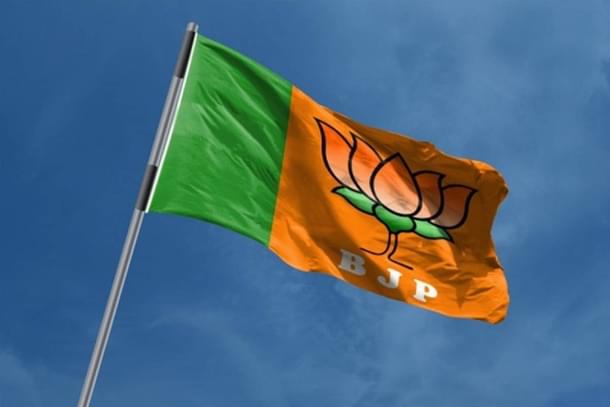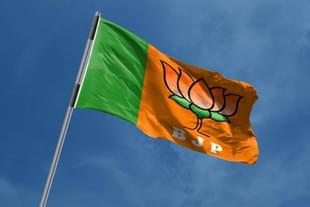Commentary
What Makes BJP A Party With A Difference
Smita Barooah
Jun 03, 2024, 09:43 AM | Updated 01:57 PM IST
Save & read from anywhere!
Bookmark stories for easy access on any device or the Swarajya app.


Today BJP is the world’s largest political party, comprising of millions of members, spread across India. Estimates in 2019 put the figure at 18 million members and the number has only grown since then. Given the mammoth organisation, most people only see a formidable Juggernaut that rolls out during elections.
In this article I will share the human side of the BJP. I don’t understand complex state politics, caste equations, regional calculations or religious nuances. As a mental health therapist, what fascinates me is human behaviour and motivation. This is my perspective on what makes the party tick.
I have been a blogger and BJP volunteer for over a decade. A couple of years ago, I got a call to be a part of the BJP Mahila Morcha- the women’s wing- as a “special invitee”. My first response was to turn it down as I had no interest in being a part of mainstream politics. I was then told that it was a role created for select women, whose professional expertise would be used only for special projects. It would entail attending a few annual meetings. So I joined and they pretty much left me alone for a year.
One day, out of the blue, they called to ask if I’d go to inspect the “Adarsh Aanganwadis” (model aanganwadis) in Ladakh. It sounded like a reasonable request, so I went. Next, they asked if I’d take part in their flagship “pravas” program, which entailed touring a district. It sounded interesting, so I went.
Next thing I knew, I had been appointed as the co-incharge of the Chhatisgarh state election and was giving speeches in Hindi, in village baithaks! The central team was questioning me on why I hadn’t done more pravas! They seemed to have forgotten that I was just a “special invitee”. It dawned on me then that the party recruits subtly. And I had been co-opted.
I specifically make this point because there’s a narrative on social media, on the lack of an eco-system. In my experience, in 2014 we had to scour for ideologically aligned people in various sectors: Media, art, culture, business and so on. Today that landscape has changed substantially and this is by design, not by chance.
The party has also focused on “vikas”- real development on the ground. The party’s politics is not based on control that is gained from keeping people hungry and deprived. BJP is invested in building a strong nation where all stakeholders grow. We’ve all seen the numbers: Swachh Bharat Mission built 11 crore toilets. UDAN created 73 new airports. Pradhan Mantri Awas Yojana (Urban) built over 1 crore houses. The highway network increased from 91287 kilometres in 2014 to 1,46,145 kilometres in 2023. The list goes on.
But these numbers only register after one has seen or experienced those changes, or spoken to the beneficiaries.
In the Maoist infested districts of Bastar, I’ve seen Swachh Bharat toilets and driven on good roads. I’ve flown from Raipur to Jagdalpur on a small aircraft, thanks to UDAN. In Silvassa, I’ve seen high quality “Awas Yojana” housing, of which 30 percent had been allocated to Muslim families. In Ahilyabai Nagar, I’ve sat with self-help groups and heard about what they had achieved with their government loans.
Vikas is good for the country and for the BJP cadre. Many of them have personally benefited from various schemes. Moreover, it has made outreach easier. They can go to voters with concrete achievements instead of some vague promises. In the Chhatisgarh state elections, for instance, the Congress promised many things but the electorate was not impressed. They hadn’t seen delivery. In contrast, voters believed in “Modi ki Guarantee” due to his track record.
To monitor efficacy of schemes, karyakartas are expected to meet beneficiaries and see how various projects are implemented. Did you know that Silavassa has a new, top notch medical college, for the local tribal children? Or that Guwahati now has a beautiful Brahmaputra riverfront? Or that Bastar is investing in growing coffee and dragon fruit? I found out only when I travelled to these places.
When karyakartas head back to base after a tour, they are expected to report progress and shortcomings. Therefore, contrary to what some may claim, the party has its ears to the ground. Given the sheer number of people involved, there may be gaps and slips, but there is a system of feedback.
There is also relentless outreach. I’m proudest of the party’s Kinnar (transvestite) community outreach, which is led by the Mahila Morcha. In Silvassa, for instance, the women organised a lunch with the Kinnars, who later told us that this is was first time someone had invited them home for a meal. In Ahilyabai Nagar, we had tea with Kajal and her Kinnar family. She was so happy that she blessed me with a saree. I can vouch that “sabka saath sabka vikas” is a reality and including the marginalised is a part of the party’s agenda.
Given the staggering scale of operations, I often wondered how the party kept their troops together. I’d heard leaders say, “BJP ek parivar hai” (BJP is a family). But what did that even mean? I found out when when I was stranded in Tumkuru and a BJYM worker- a total stranger -stepped in to ensure I got back to Bangalore safely. In a village in Chitrakoot, a karyakarta found out that we had skipped lunch, and dragged us home to feed us a hot meal. In Dehradun, during a conference, the male karyakatas used their own vehicles to provide transport to the women. In Chandigarh, when my colleague needed accommodation, a karyakarta made space at her tiny home.
As with every family, there is also bickering, ego issues, sulking etc. But when push come to shove, everyone falls in line and pulls togther. The first reason for this is strong leadership. In BJP, all successful leaders lead from the front and lead by example. If things go wrong, as they do at times, they take ownership, instead of running off on a vacation. For instance, when Chandrayaan 1 was unsuccessful, Prime Minister Modi stood with the scientists and gave them the support to forge ahead. The result was Chandrayaan 2.
Similarly, when Smriti Irani lost Amethi, she did not abandon the constituency. She dug in her heels , worked hard for the people, and earned her victory the next round.
More recently, in the scorching heat of the 2024 election campaign, the Prime Minister held 206 rallies, roadshows and events , and gave 80 media interviews! Other party leaders kept pace. The message these actions send out, to the rank and file, is not trivial.
The second reason is discipline. When Devendra Fadnavis, the current Deputy Chief Minister of Maharashtra, was deprived of his post twice, he accepted the party’s decision, without a murmur. Similarly , Shivraj Singh Chouhan , the former Chief Minister of Madhya Pradesh, stepped aside gracefully, after steering the party to victory, in a difficult election. This kind of discipline is inspirational for the cadre.
Another noteworthy element of the BJP is the dedicated female cadre. Much has been written about the party’s outreach to women voters. Not enough has been said about their women workers, whom I respect greatly. They run their own families, often juggle jobs and find time for the party. Many have personal and financial struggles, which they share only when they get comfortable. Yet they work unstintingly.
I used to wrack my brain thinking of their motivation. It is true that BJP has 11 women ministers. It is also true that the party has legislated 33 percent reservations for women in politics. So there is aspiration. But that is not everything. I have met many women, for whom monetary or political gain were not key. It took me some time to understand that there were four other powerful factors: Identity, respect, sense of community, and a feeling of being part of a cause bigger than themselves. Some of these factors are fundamental to the party’s ethos.
Last but not the least, the BJP is rooted in Sanatan Dharma- the eternal essence of the Indian civilization. Let me explain why this matters. When you travel outside the elite or hip circles, you will find an India that still values family, community, customs and traditions. For example, in Manipur, people still go to worship in traditional white or salmon coloured temple attire. In Rajasthan, even high society women cover their head in front of elders. In Assam, traditional mekhela sadors are worn for weddings and formal events.
Across the country, people still revere sacred stones, forests, rivers and more. They go back to their villages to pay obeisance to Kul Devis or Devatas. They celebrate the change of seasons, and fast or feast in sync with the cycles of the moon.
The BJP is conscious of this overarching reality and embraces it. That is why, much to the dismay and bemusement of the opposition, it understands the civilizational value of the Ram Mandir and delivers it.
Addictions counsellor. Holds degrees in Political science. Interested in photography and writing.





